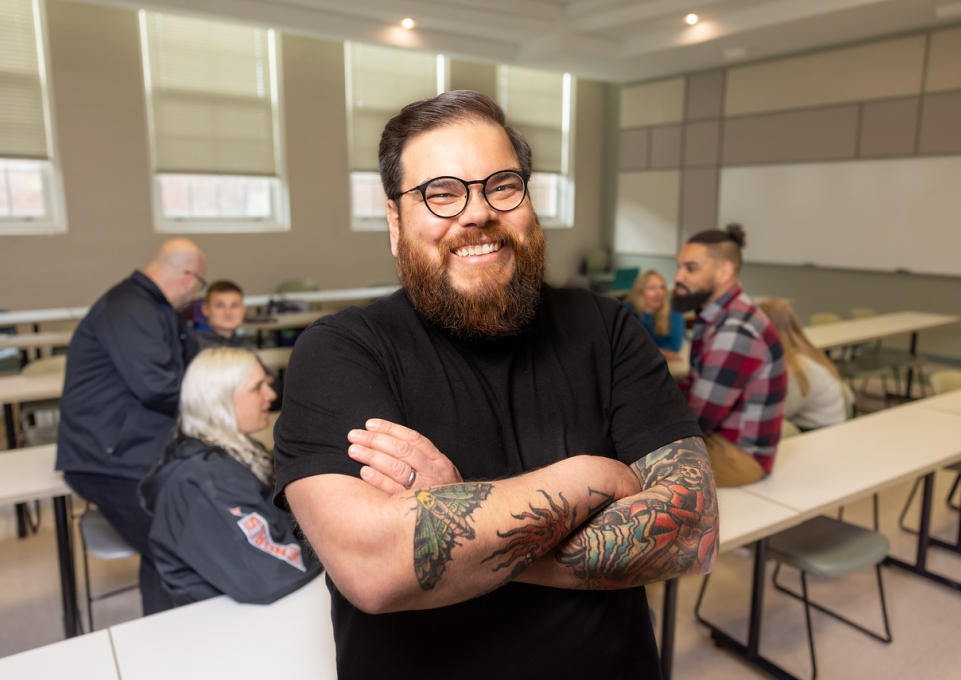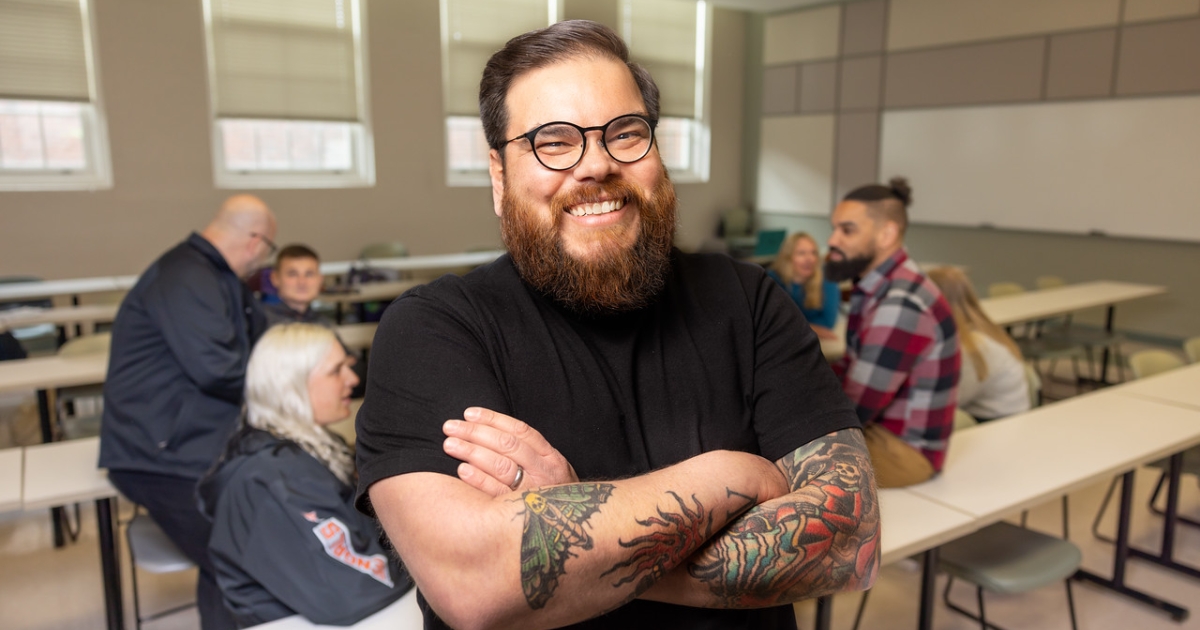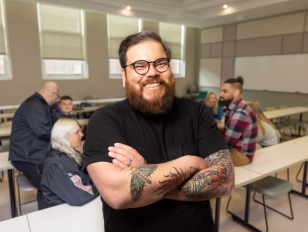
Hermen Díaz III, ’08, wants to understand how Latino men survive and thrive at institutions of higher education while also recognizing the phenomenon that they’re vanishing from college campuses.
While Latinos make up the second-largest racial or ethnic group in the United States, Latino males have some of the lowest baccalaureate and post-baccalaureate degree completion rates, said Díaz, who joined the Buffalo State faculty as an assistant professor of higher education administration in fall 2019.
“Basically, half of the Latino men who walk onto campus won’t walk across the stage to accept a diploma,” Díaz said. “They are not matriculating at the undergraduate level due to a number of barriers and realities.”
Díaz chaired the 18th annual conference of the American Association of Hispanics in Higher Education—“La Lucha Sigue: Refusal, Resistance, and Praxis at Critical Junctures”—held in Las Vegas, Nevada, March 1–3.
In addition to serving as conference chair, he and his co-researchers from the University of Rhode Island and the University of Texas at Austin presented their national study of Latino men enrolled in higher education administration master’s degree programs.
“We discussed how this group of men refuse and resist practices that are barriers to their academic and personal success,” Díaz said, adding that the research revealed that it’s often other men of color who influence Latino men to pursue higher education.
That was the case for Díaz, who joined a Latino fraternity during his second attempt at an undergraduate degree. When he originally enrolled in college, immediately after high school as a first-generation student, he dropped out after his first semester.
“I had no clue how to do college,” he said. “I took a short break and worked in construction for a while.”
Interestingly, his construction co-workers were the ones who encouraged him to give college another try. He enrolled at Grand Valley State University in Allendale, Michigan, and discovered that living on campus and joining a fraternity made a huge difference.
“Being surrounded by men with similar experiences and having a social network provided a culturally relevant space,” he said. “I don’t think I would have graduated or been successful without them.”
In addition, while Díaz worked a campus job in the student union, he said, his boss, a man of color, changed his career trajectory.
“He hired me as a naïve first-year student and introduced me to individuals across the institution,” Díaz said. “I developed confidence working in that office. It’s where I realized that administrators work in a university, not just faculty members.”
This experience also inspired Díaz to pursue his master’s degree in student personnel administration at Buffalo State and his doctorate in higher education leadership at Colorado State University. His dissertation, “Sense of Place: Sense of Belonging for Latinx Men in a Latinx Cultural Center at a Predominately White Institution,” informed his research interests.
Díaz said he isn’t interested in pursuing or researching negative trends and deficit narratives of men of color but instead creating pathways for more men of color to thrive in higher education.
“While my research situates the reality of Latino men in higher education,” he said, “my research agenda really hopes to center the success and persistence of Latino men in higher education through an asset-based lens.”
Photo by Jesse Steffan-Colucci, Buffalo State photographer.



